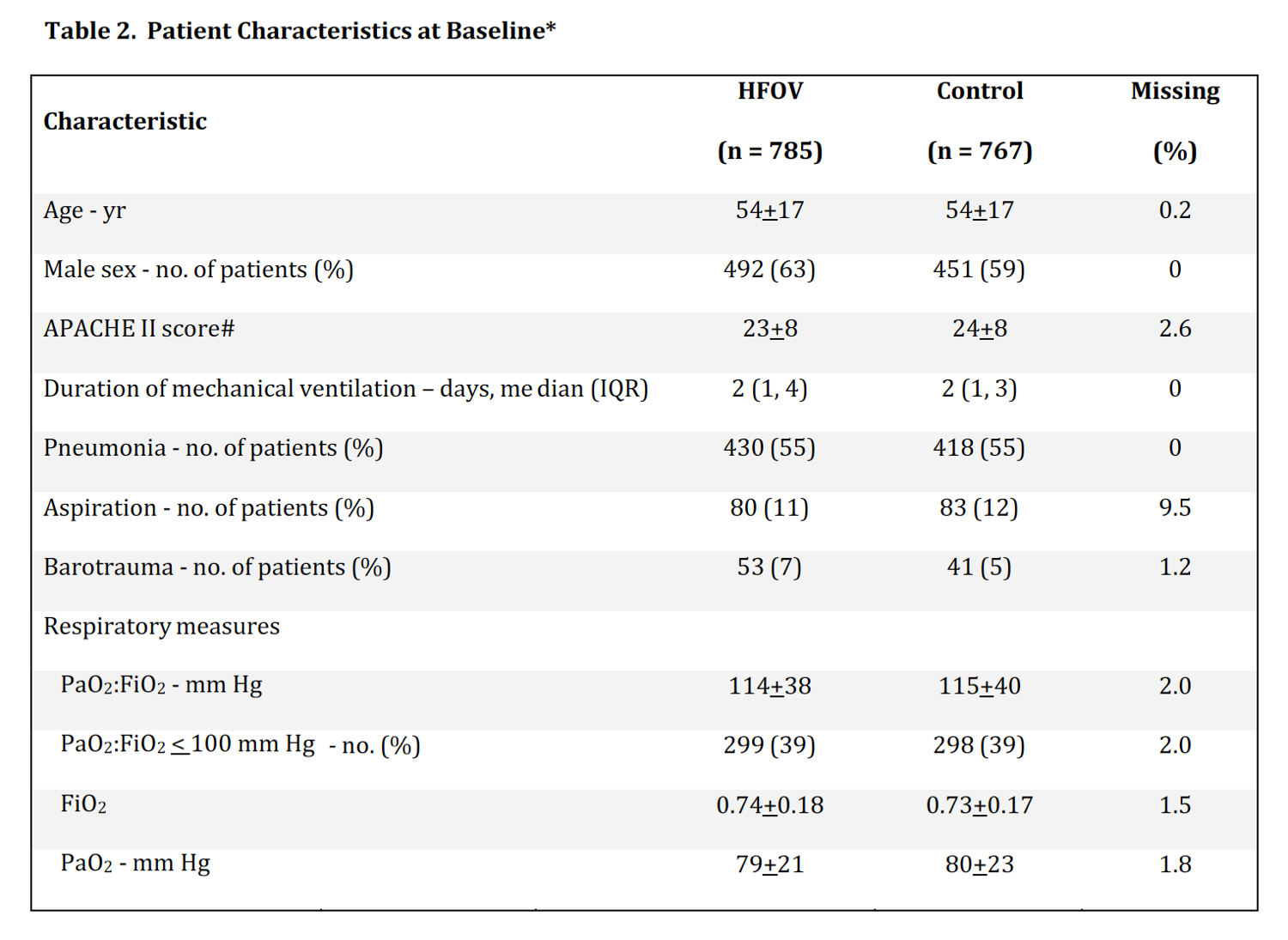Severity of Hypoxemia and Effect of High-Frequency Oscillatory Ventilation in Acute Respiratory Distress Syndrome
Maureen O. Meade, Duncan Young, Steven Hanna, et al.
Am J Respir Crit Care Med 2017; 196: 727-733
Abstract
Rationale: 背景
High-frequency oscillatory ventilation (HFOV) is theoretically beneficial for lung protection, but the results of clinical trials are inconsistent, with study-level meta-analyses suggesting no significant effect on mortality.
高频振荡通气(HFOV)理论上具有肺保护作用,但临床试验的结果相互矛盾,研究水平的meta分析结果提示对病死率没有显著影响。
Objectives: 目的
The aim of this individual patient data meta-analysis was to identify acute respiratory distress syndrome (ARDS) patient subgroups with differential outcomes from HFOV.
这是一项患者个人资料meta分析,目的在于确定ARDS不同亚组使用HFOV的预后是否具有差异。
Methods: 方法
After a comprehensive search for trials, two reviewers independently identified randomized trials comparing HFOV with conventional ventilation for adults with ARDS. Prespecified effect modifiers were tested using multivariable hierarchical logistic regression models, adjusting for important prognostic factors and clustering effects.
在对临床试验进行综合检索后,两名研究者独立确定了ARDS成年患者比较HFOV与传统机械通气的随机试验。采用多层logistic回归模型验证预先确定效应影响因素,并对重要的预后因素及群组效应进行校正。
Measurements and Main Results: 评价指标与主要结果
Data from 1,552 patients in four trials were analyzed, applying uniform definitions for study variables and outcomes. Patients had a mean baseline PaO2/FiO2 of 114 ± 39 mm Hg; 40% had severe ARDS (PaO2/FiO2 <100 mm Hg). Mortality at 30 days was 321 of 785 (40.9%) for HFOV patients versus 288 of 767 (37.6%) for control subjects (adjusted odds ratio, 1.17; 95% confidence interval, 0.94–1.46; P = 0.16). This treatment effect varied, however, depending on baseline severity of hypoxemia (P = 0.0003), with harm increasing with PaO2/FiO2 among patients with mild-moderate ARDS, and the possibility of decreased mortality in patients with very severe ARDS. Compliance and body mass index did not modify the treatment effect. HFOV increased barotrauma risk compared with conventional ventilation (adjusted odds ratio, 1.75; 95% confidence interval, 1.04–2.96; P = 0.04).
分析了4项临床试验1552名患者资料,对于研究变量及预后采用了一致的定义。患者平均基线PaO2/FiO2 为 114 ± 39 mm Hg;40%的患者罹患重症 ARDS (PaO2/FiO2 <100 mm Hg)。HFOV组30天病死率为40.9% (321/785),对照组为37.6% (288/767)(校正后比数比,1.17;95% 可信区间,0.94–1.46; P = 0.16)。然而,根据基线低氧血症的严重程度不同,上述治疗效应有所不同 (P = 0.0003),对于轻中度ARDS患者,随着PaO2/FiO2 升高,HFOV的风险增加;而HFOV可能降低最严重ARDS的病死率。顺应性及BMI对疗效没有影响。与传统机械通气相比,HFOV 增加气压伤的风险(校正后比数比,1.75;95% 可信区间,1.04–2.96; P = 0.04)。
Conclusions: 结论
HFOV increases mortality for most patients with ARDS but may improve survival among patients with severe hypoxemia on conventional mechanical ventilation.
HFOV增加多数ARDS患者的病死率,但可能改善传统机械通气时严重低氧血症患者的生存率。






